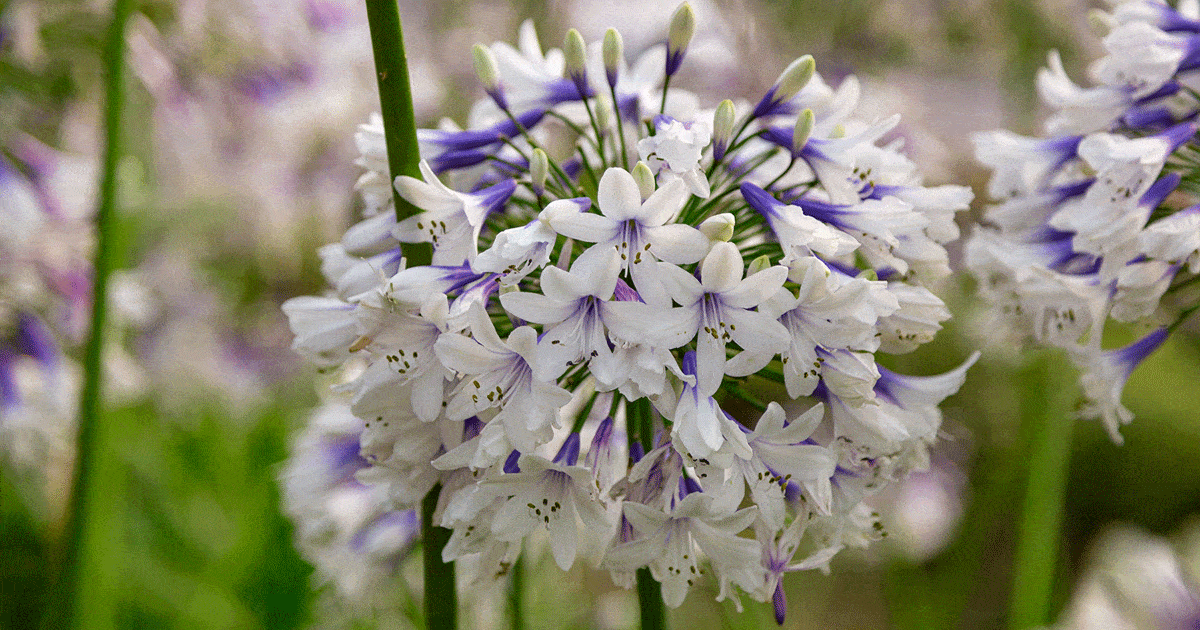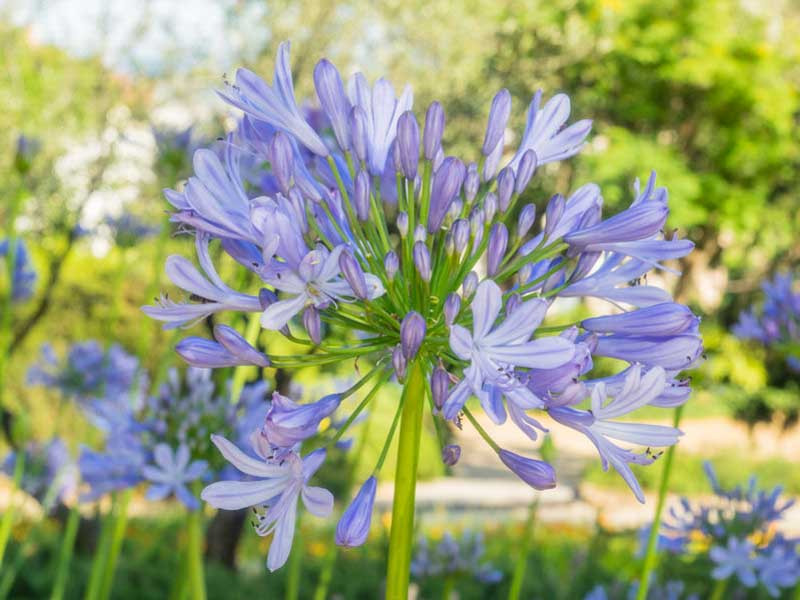Spectacular Agapanthus: Enhancing Your Garden's Elegance
Spectacular Agapanthus: Enhancing Your Garden's Elegance
Blog Article
Releasing the Secret to Successful Agapanthus Growing: Advice for a Flourishing Garden
In the realm of gardening, cultivating agapanthus successfully calls for a calculated approach that incorporates numerous elements of plant care. With cautious interest to information, one can open the tricks to nurturing these sensational blooms, bring about a garden that grows with appeal and vibrancy. By recognizing the subtleties of agapanthus farming, one can create an environment where these plants prosper and flower abundantly. In the following conversation, we will check out vital tips and techniques that will lead you in the direction of a thriving agapanthus yard, providing insights right into finest techniques, dirt problems, watering strategies, and a lot more.
Growing Agapanthus: Ideal Practices
When growing Agapanthus, appropriate soil prep work is necessary for making certain successful development and advancement of these beautiful flowers. Agapanthus, frequently referred to as Lily of the Nile or African lily, thrives in well-draining dirt with a somewhat acidic to neutral pH degree - Agapanthus. Before planting, it is crucial to change heavy clay soils with organic issue such as compost or peat moss to boost drain and provide crucial nutrients for the plants
To plant Agapanthus, choose an area that obtains full sunshine to partial color, as this will advertise healthy growth and bountiful flowering. Dig an opening twice the size of the plant's root round and place the Agapanthus at the very same depth it was formerly expanding. Gently backfill the hole with dirt, weighing down firmly to eliminate any type of air pockets around the origins.
Water the freshly grown Agapanthus extensively and proceed to keep the dirt uniformly moist, particularly during the plant's active expanding season. Agapanthus. Applying a balanced fertilizer once a month can better sustain the plant's growth and blooming. By adhering to these ideal methods for planting Agapanthus, you can develop a magnificent screen of these fascinating flowers in your yard
Perfect Dirt Issues for Agapanthus
For optimal growth and flowering success of Agapanthus plants, guaranteeing the soil problems are perfect is important. Agapanthus favors soil that is rich in nutrients, so incorporating a balanced fertilizer throughout the expanding season can advertise healthy and balanced development and vibrant blossoms.

Watering and Feeding Tips
To guarantee healthy growth and vivid blooms, proper watering and feeding techniques are vital for successful Agapanthus growing. Agapanthus plants take advantage of routine watering, particularly during the growing period. It is recommended to water deeply once a week, making sure the dirt is wet however not soaked. Throughout warm climate or in pots, even more constant watering may be needed to stop the soil from drying completely.
When it comes to fertilizing Agapanthus, a balanced fertilizer with equivalent components nitrogen, phosphorus, and potassium can be used in the spring to promote healthy growth and blooming. Slow-release plant foods are ideal for supplying nutrients slowly over an extensive duration. Avoid over-fertilizing, as this can result in too much vegetation development at the expenditure of blooms.
In addition, incorporating organic issue like compost right into the soil can boost nutrient degrees and boost dirt framework, aiding in the overall health and wellness of the Agapanthus plants. By adhering to these watering and fertilizing suggestions, garden enthusiasts can ensure additional info their Agapanthus plants flourish and produce sensational screens of blossoms.
Pruning and Deadheading Techniques
Proper pruning and deadheading techniques play an important duty in keeping the health and wellness and aesthetic appeals of Agapanthus plants, enhancing the important methods of watering and feeding for successful farming. Trimming Agapanthus entails eliminating spent flower heads, dead or yellowing leaves, and general shaping of the plant to promote far better growth. Deadheading, the procedure of getting rid of discolored blossoms, not just improves the plant's appearance however additionally encourages additional blooming.
When deadheading Agapanthus, it is a good idea to snip off the blossom stem at the base utilizing sharp, tidy shears. This process reroutes the plant's energy from seed production back right into origin and foliage development, promoting a healthier and much more robust plant. Routine deadheading can expand the growing period of Agapanthus and stop self-seeding, which can result in congestion.
In regards to pruning, Agapanthus usually gain from a light trim after blooming to clean the plant and motivate fresh growth. check this Cutting down the invested flower stems and getting rid of any dead or broken foliage helps preserve the plant's vitality and general look. Nevertheless, it is necessary to avoid cutting into the crown of the plant, as this can damage its health and wellness.

Protecting Agapanthus From Pests and Diseases
Applying effective bug and disease administration strategies is vital to protecting the health and vitality of Agapanthus plants in cultivation. One common pest that influences Agapanthus is the Agapanthus borer, a caterpillar that tunnels into the plant, triggering damage to the leaves and flowers.
Along with pests, Agapanthus are vulnerable to illness such as root rot and fungal fallen leave spots. These issues can commonly be stopped by making certain proper water drainage and staying clear of overwatering. If indications of illness appear, influenced components of the plant need to be quickly eliminated to prevent more spread. Fungicides might additionally be made use of as a therapy action, following the producer's guidelines thoroughly. By staying cautious and addressing pest and disease issues promptly, gardeners can aid their Agapanthus thrive and flourish.

Final Thought
To conclude, successful cultivation of agapanthus calls for proper planting methods, ideal soil problems, adequate watering and fertilizing, routine trimming and deadheading, and defense from conditions and pests. By complying with these techniques and ideas, gardeners can make certain a flourishing garden full of beautiful agapanthus Check This Out blooms. Agapanthus. Keep in mind to preserve regular treatment and attention to information to advertise the wellness and longevity of these spectacular plants
When planting Agapanthus, appropriate soil prep work is necessary for ensuring effective development and development of these lovely flowers.Water the recently grown Agapanthus extensively and proceed to keep the soil evenly damp, specifically throughout the plant's active growing season.For optimum growth and growing success of Agapanthus plants, making sure the dirt conditions are excellent is important. When hair transplanting or growing Agapanthus, make sure the dirt is well-prepared to provide the required structure for the plants to establish themselves successfully. One usual bug that impacts Agapanthus is the Agapanthus borer, a caterpillar that passages right into the plant, triggering damage to the blossoms and fallen leaves.
Report this page